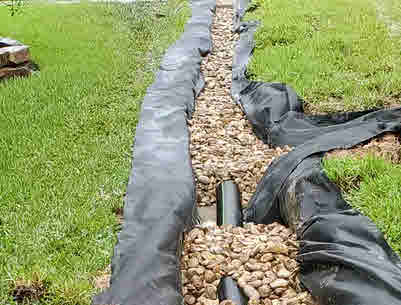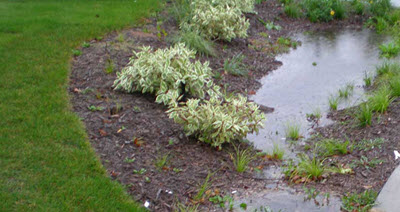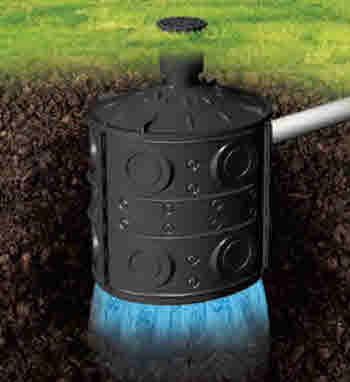Yard and Lawn Drainage
When it comes to maintaining a healthy, vibrant yard or lawn, effective drainage is key. Proper drainage not only helps in retaining the right amount of water for plant growth but also prevents waterlogging, soil erosion, and other associated problems. We’ll cover the essential steps to plan and prepare for yard drainage and explore various methods to improve it.
Planning and Preparing for Yard Drainage
Assess Your Yard’s Current Drainage
Before you start, it’s important to understand your yard’s existing drainage patterns. Look for areas where water tends to pool or flow excessively after rain. Pinpointing the trouble spots will help you determine the best approach. Take note of:
- Low spots that collect water
- Slopes and gradients
- Soil type and permeability
- Existing drainage features (e.g., gutters, downspouts)
- Water pooling near the foundation
- Soggy patches on the lawn
- Waterlogged flower beds
Determine Your Yard and Lawn Drainage Goals
When you know the type of problem you are facing, you can then set clear objectives for your drainage project. Whether it’s redirecting water away from the foundation, eliminating puddles, or improving soil aeration, having defined goals will guide your planning process.
1. Redirecting Water Away from Structures. Prevent water from pooling near the foundation, patios, structures, or in the middle of your lawn.
- French Drains: Install along the perimeter to channel water away.
- Gutters and Downspouts: A common water problem is cause by the water that comes from the roof of the building. The water built-up collects near the wall of the structure as it is not able to drain away effetely. Ensure they are properly directed away from the foundation.
- Grading: Adjust the slope around structures to promote water flow away from them.
2. Eliminating Water Puddles. Remove standing water in your lawn or driveway that creates muddy areas or attracts pests, or creating ideal spots for moss to form.
- Dry Wells: Collect and disperse excess water underground.
- Rain Gardens: Utilize low spots to absorb and filter water naturally.
- Permeable Pavers: Replace impermeable surfaces with materials that allow water to seep through.
3. Improving Soil Health. Enhance soil structure to facilitate better water absorption and root growth. The ground or soil is too compact to allow the water to seep through.
- Soil Aeration: Reduce soil compaction by creating small holes, improving water infiltration.
- Organic Matter: Add compost or mulch to enrich the soil and retain moisture.
- Cover Crops: Plant cover crops to prevent erosion and improve soil fertility.
4. Preventing Erosion. Stabilize soil to prevent erosion caused by water runoff. Despite ensuring grading to help with the run-off of water, if the sloop is too steep, or the amount of water running off the slow is too much and fast, it may cause the soil to erode. If not taken care of it may result eroding to accelerate, and ruin your landscape, even causing dangerous situations such as landslides.
- Terracing: Create stepped levels on slopes to reduce runoff speed.
- Retaining Walls: Build walls to hold back soil and manage water flow.
- Ground Cover Plants: Plant ground cover to protect soil and absorb water.
5. Enhancing Aesthetic Appeal. Integrate functional drainage solutions that also improve the visual appeal of the yard.
- Rain Gardens: Design attractive, planted areas that manage water.
- Dry Creek Beds: Create decorative channels with rocks and plants to guide water.
- Landscape Swales: Construct shallow, vegetated channels to direct water flow.
Improving Yard and Lawn Drainage
1. Install a French Drain
A French drain is an effective solution for redirecting water away from problem areas. It consists of a trench filled with gravel and a perforated pipe that guides water away from your yard.

- Dig a trench along the desired drainage path.
- Lay a layer of gravel at the bottom.
- Place the perforated pipe on the gravel.
- Cover the pipe with more gravel and then soil.
2. Create a Rain Garden
Rain gardens are shallow, planted depressions that absorb rainwater runoff. They are aesthetically pleasing and eco-friendly.
- Choose a low-lying area where water naturally collects.
- Amend the soil to improve drainage.
- Plant native, water-tolerant plants.
- Mulch the garden to retain moisture and prevent erosion.

3. Use Permeable Pavers
Replacing traditional, impermeable surfaces (like concrete) with permeable pavers allows water to seep through and reduce runoff.

- Remove the existing surface.
- Lay a base layer of gravel.
- Install the permeable pavers.
- Fill the gaps with gravel or sand.
4. Install Dry Wells
Dry wells are underground structures that collect and gradually disperse excess water into the surrounding soil.

- Dig a hole and insert a dry well container.
- Connect the well to drainage pipes.
- Cover the well with gravel and soil.
5. Improve Soil Aeration
Compacted soil can prevent proper drainage. Aeration helps improve soil structure and water infiltration. There are many tools ad ways to do this. amd it depends on whether you apply this to a lawn or flower bench or other type of surface.
- Use a lawn aerator to create small holes in the soil.
- Apply compost or organic matter to enhance soil fertility.
- Water the lawn deeply and infrequently.
Maintenance Tips
- Regularly clean gutters and downspouts to prevent blockages.
- Check and maintain drainage systems periodically.
- Monitor plant health and adjust watering practices as needed.
